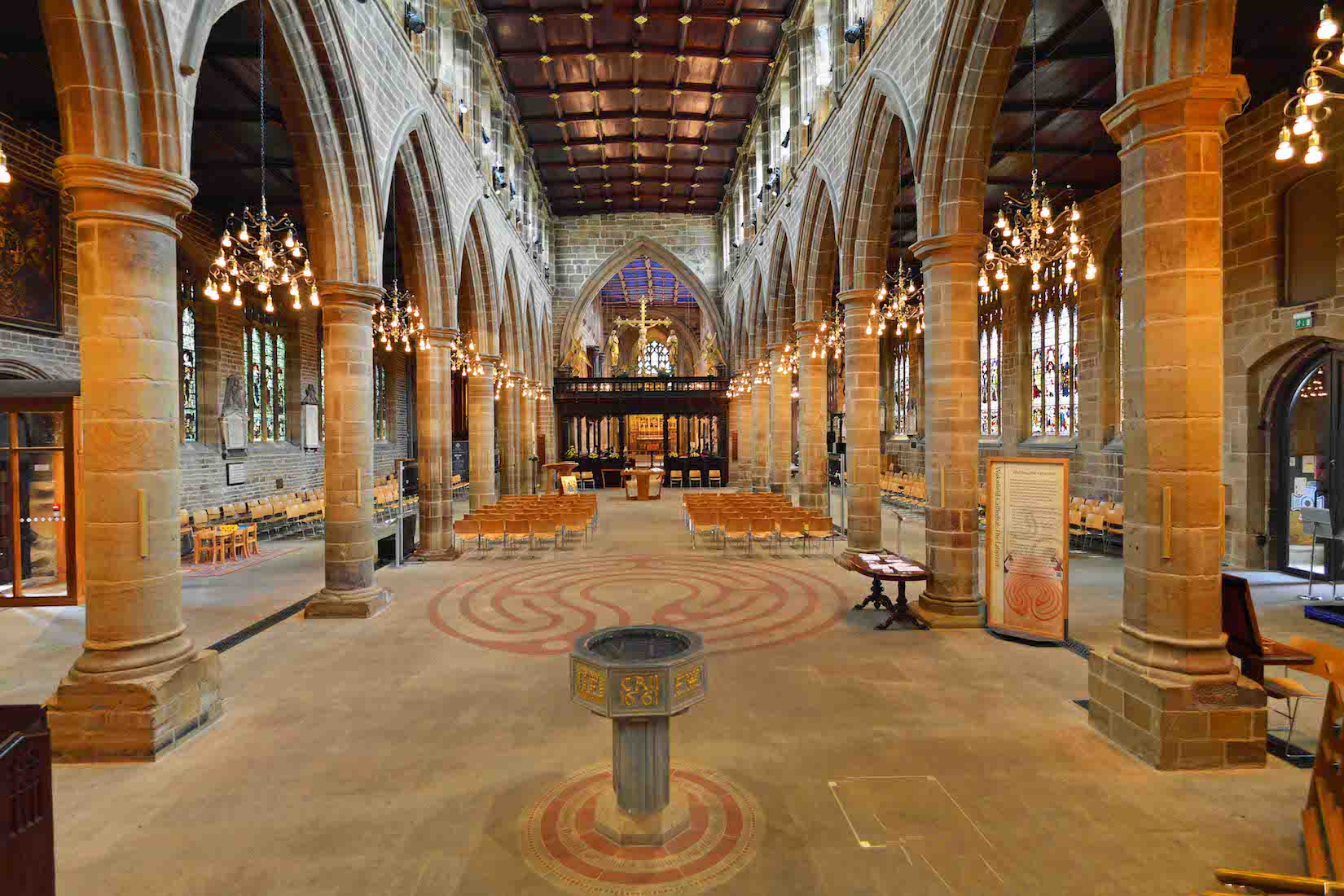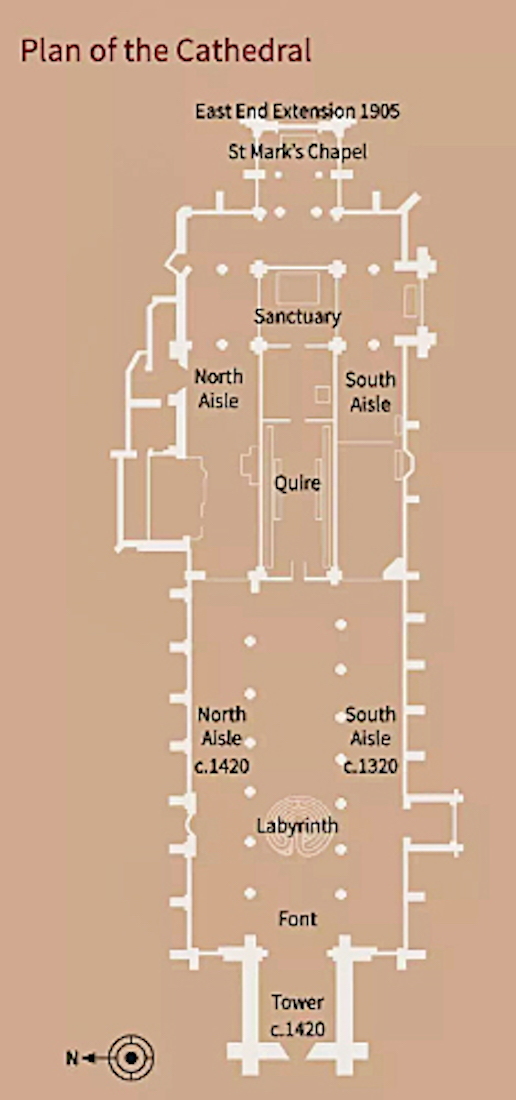WELCOME TO
WAKEFIELD CATHEDRAL
YOKSHIRE ENGLAND
PAUL SCOTT
SATELLITE VIEW
Wakefield Cathedral is essentially rectangular, and aligned in a geographical east-west direction with the sanctuary towards the east. This means that our liturgical directions (East-West with capitals) coincide with the geographical directions.
We note then the large Western tower, the nearby South Porch, the Northern link to the octagonal café and shop. At the Eastern end we have St Mark’s Chapel extending, and a narrow transept which curiously extends to the South but not to the North. The rectangular body of the Cathedral has a kink in the middle!
We shall begin our outside exploration at Northgate near the tower, follow around on the Kirkgate side, and so to the East end, after which our passage is blocked by the adjacent buildings.
This is the official Cathedral plan. On entering the nave, we shall look at the Tower entry, font and labyrinth before investigating the rest of the Nave. We then follow around the North (Quire) aisle, unmarked East Quire aisle, and South (Quire) aisle, looking at St Mark’s Chapel along the way.
There follows a short detour to the Crypt which lies under the East Quire aisle and St Mark’s Chapel. Finally we check out the Quire and the Sanctuary.
This is a charming Cathedral with much to enjoy.
A brief history of the Cathedral is given below. However, if you want to begin your tour of the Cathedral immediately, tap / click on START . You can also access intermediate points in the tour by a tap / click on the following links:
NOTE ON MAGNIFYING IMAGES
With this website format the images are large enough for most purposes. If there is a need for greater magnification of an image, go to the identical photo on
https://www.flickr.com/photos/paulscottinfo/albums
and use Command - + (Mac) or Windows - + (Windows).
HISTORY
[Wikipedia]
Wakefield Cathedral, or the Cathedral Church of All Saints in Wakefield, West Yorkshire, is one of three co-equal Anglican cathedrals for the Diocese of Leeds and a seat of the Bishop of Leeds. Originally the parish church, it has Anglo Saxon origins and after enlargement and rebuilding has the tallest spire in Yorkshire. Its 247-foot (75 m) spire is the tallest structure in the City of Wakefield.
The Cathedral was designated a Grade I listed building on 14 July 1953.
The Cathedral, situated in the centre of Wakefield on a hill on Kirkgate, is built on the site of a Saxon church, evidence of which was uncovered in 1900 when extensions to the East end were made. A church in Wakefield is mentioned in the Domesday Book of 1086. In 1090 William II gave the church and land in Wakefield to Lewes Priory in Sussex and shortly after that a Norman church was built.
The Norman church was rebuilt in 1329, and apart from the tower and spire, rebuilt and enlarged in 1469. The church was reconstructed and altered at various times and its spire, damaged in a violent gale, was renewed in 1823. Up to the 16th century the church was known by the Anglo Saxon All Hallows and after the Reformation changed to All Saints.
All Saints’ Church was largely rebuilt in the Perpendicular Gothic style in the early 15th century and, after years of neglect in the 18th century, owes its current late mediaeval appearance to a Victorian restoration by George Gilbert Scott and his son John Oldrid Scott between 1858 and 1874. In 1888, the Diocese of Wakefield was created and All Saints’ Church became the Cathedral of the diocese. It still serves as a parish church, meaning that until 2000 the head of the chapter of canons was called the provost, rather than the dean. The Treacy Hall built in memory of Bishop Eric Treacy was completed in 1982.
In January 2000 a parish boundary change brought the chantry chapel, on Wakefield Bridge, into the care of the Cathedral.
In 2005 Queen Elizabeth II visited the cathedral to distribute Maundy money.
In 2012 the cathedral, with £1.58 million of Heritage Lottery funding, had raised £2.5 million to restore and reorder the nave which was to be cleared of its oak pews to create an open space for worship, public events and celebrations. A decision to charge VAT on restoration work on historic buildings in the 2012 budget caused concern that the project would be halted or delayed.
Its archives are held at West Yorkshire Archive Service in Wakefield.





